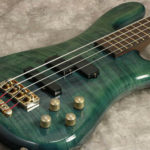

Walking Bass
A walking bass line walks between chords, outlining the harmony and using quarter notes to keep a steady rhythm.

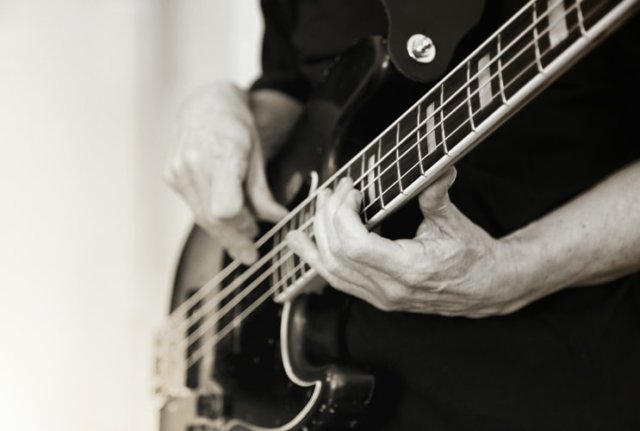
What is a Walking Bassline?
A walking bass line moves a song forward one note at a time. A bass line is the momentum of a song. When we walk, our feet keep a steady motion, and move forward, like marching or cadence. A bass line in music keeps the beat, tempo, and rhythm of a piece of music, as it moves forward throughout the song. A walking bass line is played with quarter notes, that have an even duration and dynamic.

Leading Tone
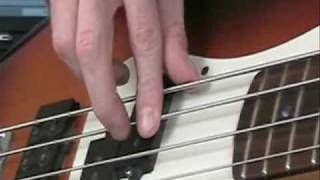
Walking bass is generally improvised. When you apply chord tones and scales from an improvisational perspective, it is important. To help develop your ability to improvise properly, you need to understand notes and chords.

A walking bass line simply walks through the appropriate scale of each chord, one note per beat, hitting every beat of each measure. The walking bass line was developed by upright bassists like Ray Brown, Milt Hinton, Paul Chambers, and Ron Carter, but now it’s also commonly played on the bass guitar.

Walking bass lines are played at an elementary level by using quarter notes to form motion in the piece. For example, while playing a C minor seventh chord, the chord could be broken into chord tones of one, three, five, and seven. To play this chord as a walking bass line, the individual notes or tones are played individually instead of all at once.

In terms of music theory, a walking bass line comprises several opportunities for music choice and requirements. The following notes and tones play a role in walking bass lines found in various music genres.
Root:
The concept of a root pitch is essential in a walking bass line. The root is the note that creates the tone for a musical key. The root note of a chord is also the chord’s name. For example, in a C major chord, the note C would be the root of the chord.
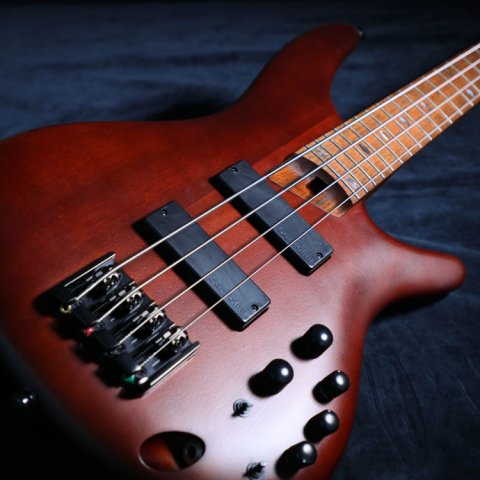
One-Five
Consider the various chords, that are played in walking bass lines. The one and five notes are important in the sound of a piece. The one-five refers to the 1 or one chord, which is formed by using the first note of the key. The 5 or five chord is formed by using the fifth note of the key.
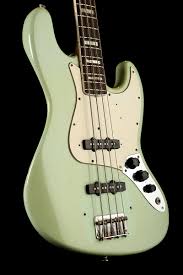
Passing
A passing tone is used as a form of melody embellishment that can be found in between two chord tones that form a type of step motion in a piece of music.
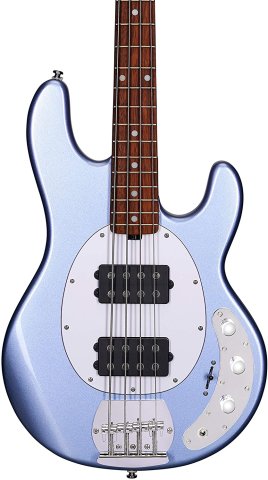
Neighbor
Neighbor tones are similar to passing tones because they also form melody embellishment between chord tones. Neighbor tones differ from passing tones because a neighbor tone forms a step up or step down from a specific note, and then the melody moves back to the former note.

Root, one-five, passing tones, and neighbor tones all relate to walking bass lines because they are used in music composition. These music techniques help form walking bass lines and provide interesting rhythm and movement in a piece of music.
Baroque
Walking bass lines have a long history in classical music. During the Baroque music period from 1600 to 1750, they used the technique known as basso continuo, which used improvisation that is played as a bass line, by a keyboard. Only the bass line was written out, which gave the harpsichordist or organist room to improvise the treble parts. The composer, J.S. Bach, used this technique in many of his compositions. The usage of the walking bassline began with Baroque classical music.

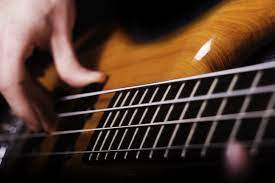
Create Walking Basslines
A great bassist playing a walking bass line knows exactly what he’s doing.
He know which notes to play, when and where. It’s like having a map.
Just like learning to read and write. You learn letters first, then you form words. You learn to put words together, to make sentences. In music, you learn notes, then you form chords. You learn to make chord progressions and sequences, which become songs.
The bass is the groove, which provides a good steady pulse, and makes the music swing. The notes should be a secondary consideration. Start with the simplest line possible and build from there. Focus on time and feel.
The simplest notes to play, are the root notes of the chords. Roots played in quarter notes through a chord progression ts the harmonic foundation of a tune.
Know the names of the notes. The diagram below shows the notes, in the 1st position on a bass guitar, or ½ and 1st positions on an upright bass.
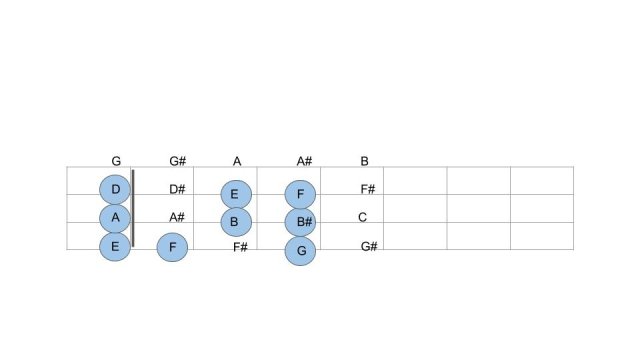
The notation below shows the locations of the first position notes on the bass clef staff. Learning all the notes and how to read them in music notation does not have to be learned all at once, or at first. You can learn them as the song or exercise you’re working on requires them. Also, while reading and sight-reading is a wonderful long term goal, it is not needed to begin playing music.

Begin with a basic 12-bar blues in the key of C. The root notes will be C, F, and G.
This simple chord chart, shows the chords, in order, and how long each chord lasts.
The slashes mean continuation of the previously specified chord. Sometimes, slashes will mean improvise. For this sequence, continue playing the given note in quarter notes. Playing only the roots of the chords is a simple way to make a good, steady beat. It works and sounds good for playing with other musicians.
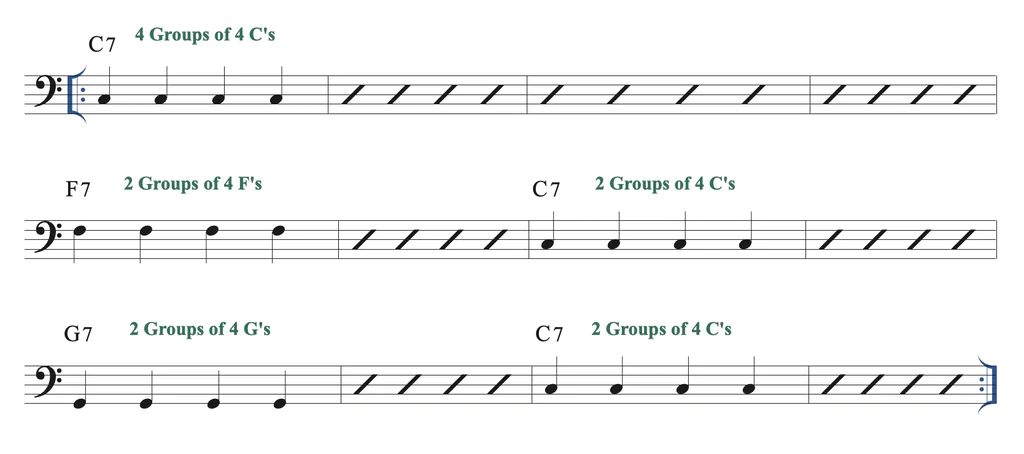
Root Notes Walking
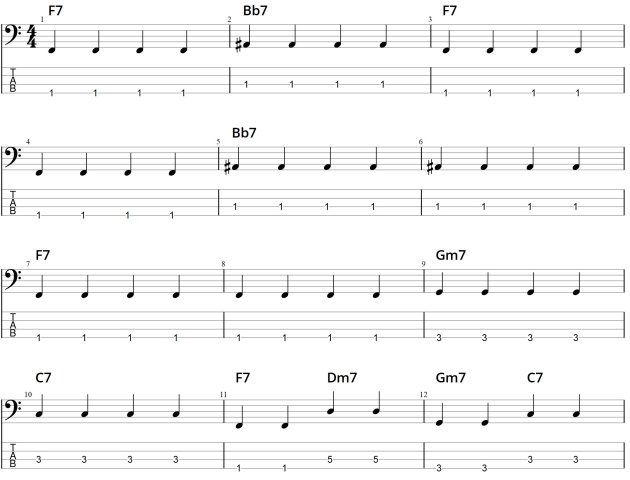
Memorize this bass line.
Learn the chord progression, where chord changes happen. Play the walking bass rhythm by plucking straight quarter notes.
This means 4 notes per bar of music that you need to play and that’s it.
Write down the chord progression
Find root note for each chord
Play 4 quarter notes per 1 bar
Play only root note of each chord
Approach Note From Below
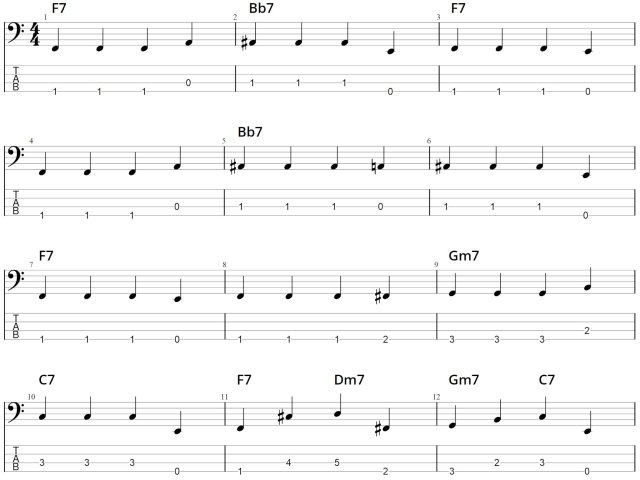
This is the exact same bassline, but this time play a note that is a half-step below the root note of the chord, on 4th beat.
R – R – R – ½ below
R – R – R – ½ below….
Play root notes following chords in a backing track
Add approach note half step below the next root note, on a beat before every chord change or new bar
Approach Note From Above
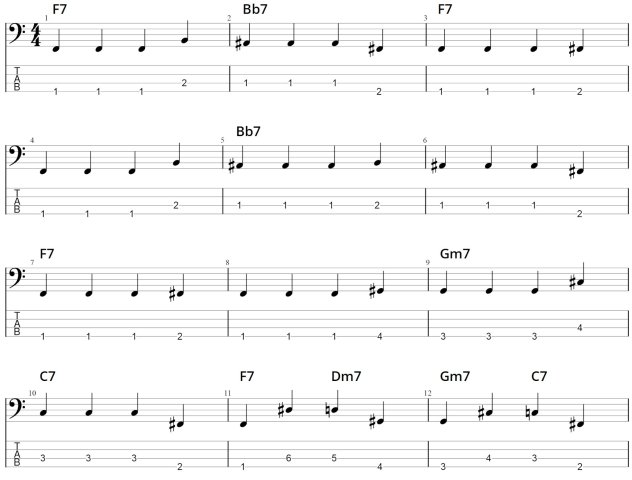
This step is the same as the previous step, but instead, play the approach note that is a half step above the next root note, on 4th beat.
Then go back half step down to play the root note of that chord. This adds movement to the line.
R – R – R – ½ above
R – R – R – ½ above….
Play root notes following chords in the backing track
Add approach note half step above the next root note, on a beat before every chord change or new bar
Improvise
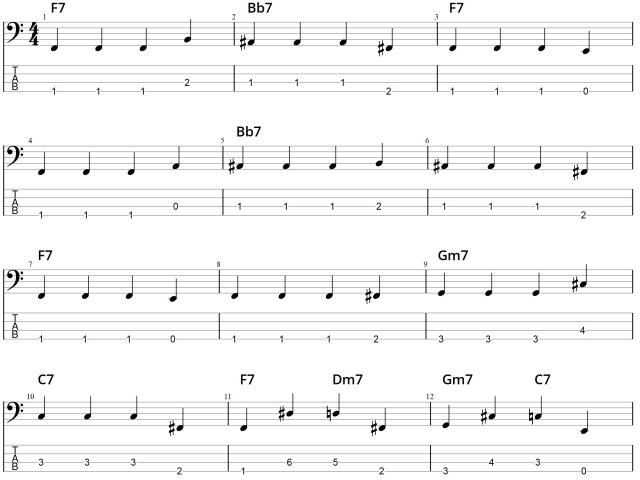
Now,mix it up.
Play approach notes from above or below, or just root notes, to create your own walking bass line.
Just mix up the 3 concepts above.
Try it on your own with a backing track and start improvising your first walking bass lines. You only need to know which chords are played in the progression to be able to improvise.







